It’s been a quiet few months here on the blog, and it’s because I’ve been occupied with Project Baby since moving to Taiwan. Pursuing fertility treatment was one of the significant factors of our relocation. The journey has been a total emotional roller coaster.
For what it’s worth, I’m sharing our story here. One, is to simply be more open about fertility challenges. It’s 2021, yet so many women and couples suffer alone in their pursuit to have a baby. Two, if anyone happens to be seeking treatment at Lee Women’s Hospital, perhaps our story will prepare you better and have a smoother ride.
First Visit to the Fertility Clinic
At the beginning of 2019, halfway through our around-the-world travel, we began our journey to have a kid. Back then, I had the naive thought that we’ll just take it easy, and if it works, great; if not, then not meant to be. IVF was out of the question. Oh, how silly I was.
Due to Xav’s age that was nearing 50 at the time, we headed to a fertility clinic while in Uruguay, visiting his brother, who works in healthcare. Despite the ridiculous Hollywood portrayal that men can make babies easily at any age, I had known that men’s fertility also declines with age. Xav gave a sample for a sperm analysis. The clinic gave us a detailed report full of numbers we didn’t know, along with an incredibly ambiguous verdict. The result is average – not great, but not bad. Keep trying.
Okay…
Keep trying, we did. Beyond some supplements, we received no medical instruction on improving sperm quality. Meanwhile, I thought I was the problem. I peed on ovulation sticks and read up on how exactly one makes a baby. Meanwhile, following all the well-wishers’ advice to JUST RELAX.
Note: I encourage every couple to not wait too long before getting a diagnostic for both men and women. Male-factor infertility contributes to nearly 50% of fertility struggles (shocking, it does really take two to procreate). Yet, I hear stories of so many women frustrated with their bodies while their male partners refuse to get a check-up. The inequity is real.
Initial IVF Diagnostic in Vietnam
Over six months later, we moved to Vietnam. Aunt flow continued to arrive with incredible precision. We headed for more exams at Hanh Phuc, the IVF Hospital in Ho Chi Minh City. All of my tests came back normal, apart from a small uterine polyp. Xav’s was a different story. The doctor immediately recommended IVF with ICSI. I was incredibly skeptical that no other efforts were made to address his issue first. Emotionally, I was not ready to go down the IVF journey.
We spent the next few months exploring natural remedies. Both of us attended weekly acupuncture sessions, taking disgusting herbal medicine drinks. I charted my basal body temperature daily in an attempt to catch those precious fertile days. Meanwhile, people kept telling us to relax. It all felt like a science experiment.
Sometime in the spring, I had minor surgery to remove the uterine polyp, hoping it would increase our chances. The experiment continues, and those pregnancy tests continue to come back very blank. A year later, we admitted defeat. Our desire for biological children didn’t wane, so we decided to give science a chance and go down that IVF route.
Note: IVF is a financial and emotional drain. Take your time to be in the right financial and emotional state. The journey will undoubtedly cast its share of frustration, but being thrown into the deep end without being somewhat ready only adds to the pain.
First Visit to Lee Women’s Hospital in Taichung, Taiwan
Before moving to Taiwan, I’ve been recommended Lee Women’s Hospital as a reputable IVF clinic. The location happens to be in my hometown in Taichung, Taiwan. The week after we moved into our new apartment, we decided to pay the famous IVF hospital a visit. I had read that IVF treatment usually begins on the 3rd day of the menstrual cycle, so we showed up on that day, unsure of what to expect.
For your first visit, there isn’t any appointment system. You basically arrive at the hospital to take a number (掛號) and wait for your turn. There are a few different fertility doctors, but I wasn’t sure whom to go with and decided to go with the famous doctor whom the hospital is named – Dr. Lee (李茂盛). His appointment slots are each morning from 8:30-11:30am.
We arrived around 8am, took a number, filled out paperwork for my patient profile, and waited. We were first led to a welcome desk that gave us a quick overview of the fertility treatment and then a quick hospital tour. Soon, the nurses called my name, we had a brief visit with the doctor to discuss our situation (prior recommendation for ICSI due to male-factor, etc.). He then ordered a bunch of tests for us. We were then shuffled to various testing rooms, collecting samples, and told to wait for an hour for the test result for the next step.
The ICSI-IVF Journey Begins
Once the test results were ready an hour later, we were ushered to see the Doctor again. He looked at Xav’s sperm analysis and came to the same conclusion of ICSI-IVF – this is where sperm is injected into an egg to create an embryo. Similar to our experience in Vietnam, there wasn’t a lot of additional explanation. This time, we were ready to embark upon the journey.
Since I had timed my cycle so well, and because my lining and results looked fine, the doctor said I could begin treatment that very same day. Once again, no efforts were taken to address the male of this male-factor problem. I wasn’t sure what to expect when we arrived at the hospital that morning. Still, I definitely didn’t think we’d begin treatment right away. The efficiency was both impressive and head-spinning.
In a mad rush, I was given various papers to schedule tests over the next week that would ensure my uterus is in tip-top shape, my fallopian tubes are not blocked, and a mammogram to rule out breast cancer. I was also given a payment for all of the tests and drugs. Then came the shocker: This very posh hospital that supposedly serves international clients accepts only CASH PAYMENT.
Get That Cash Ready, Literally
Before our first visit, I had inquired about the lump-sum cost of one round of IVF treatment at Lee Women’s Hospital. I was given a range between NT$ 120k-150k (US$ $4,300 – $5,400) per round, which I later realize is very much on the low-end range – our figure ended up much higher, which I will detail below.
The total bill for our very first visit was over 1k USD, which they wanted in local currency cash. Clearly, fertility treatment at this very reputable hospital is not meant for the economically disadvantaged. I was surprised by this lack of payment flexibility. The frustration proved ongoing.
Apart from a few significant procedures, where the cost was notified ahead of time, I never knew how much my weekly visit bill would be. To pursue treatment at Lee Women’s Hospital in Taiwan, you basically need the entire lump sum worth of cash ready for withdrawal with short notice.
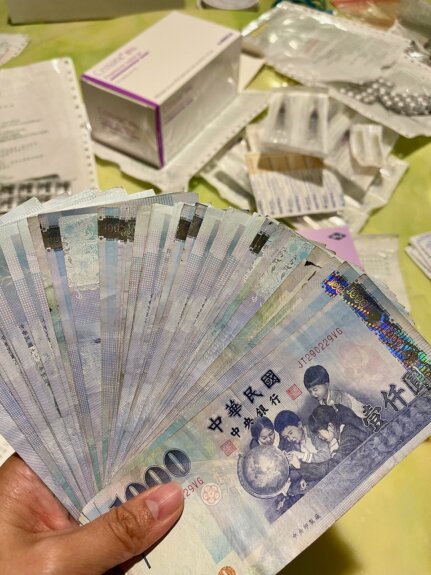
Note: The procedure for each visit to Lee Women’s Hospital is as follows:
- Arrive as early as possible in the appointment range. Check-in with the nurse at your doctor’s room – give your national health insurance card if you are Taiwanese.
- Wait to be called if you need to get an ultrasound or tests.
- Wait to be called for your 5-minute consultation with the doctor. (Prepare questions ahead of time because he won’t tell you anything other than what’s absolutely necessary, which is not much.)
- Wait to be given your bill and insurance card back.
- Pay cash at the registrar and then pick up meds if you’ve been prescribed.
- Visit the consultation room if you are starting a new procedure to get an explanation.
Here Come the Needles
Once we paid up, the pharmacist gave me a duffle bag full of drugs. We were then told to go to the consultation room for an explanation. Once again, it was a mad rush. The consultant gave us a rapid-fire direction. In the same manner, she must have told similar patients hundreds of times and sent us on our way. Friends who went through a similar process in the US told us there were special classes they could take on learning to practice injections on orange. Definitely not our experience. I guess you get what you pay for…
Up to this point, the entire process took place on day one. The efficiency was mind-blowing yet frustrating. It felt very much like a factory assembly line, rather than starting the sacred journey of creating human life. While the hospital is armed with state of art technology, some practices are strangely outdated, including paper medical files… It’s a confusing place.
That evening, faced with our first shot, we couldn’t remember anything that the consultant had said. Thankfully, YouTube is full of instructional videos. We followed directions there. The protocol for the initial round of shots was scheduled for one week. I then returned to scan for follicle development. Within 10 days of starting the treatment, I was given a trigger shot to prepare for egg retrieval.
Egg Retrieval Process
A week after my first visit, I was checked for follicle development. 20 looked ready. The doctor issued another day of shots and asked us to return the following day. He then determined that 22 follicles were ready. I was then given a strict timeline to return for the trigger shot that evening. We were also given a breakdown of the costs, including PGS – genetic testing for the embryos.
36 hours after the trigger shot, the retrieval procedure took place. This was the first surgery/procedure that I experienced at Lee Women’s Hospital. It would become the norm where no one tells me what to expect, and I’m left confused every minute of the way. Somehow, I kept making the mistake of not asking questions and assuming someone will explain what goes on.
I was checked into the surgery ward around 8:30am., changed into a hospital gown, and was put in one of the 10 or so beds laid out in the “recovery area.” A nurse came to insert an IV drip into me and told me to wait. When it’s my turn, I followed a nurse and walked into the surgery room. Once again, it felt rushed, and I felt more like an animal in a lab than a patient.
Before I could react, I was put under general anesthetic. I have zero clue what happened and woke up some unknown amount of time later in the recovery area. The nurse instructed me to wait through the IV drips after I woke up. Once I was awake and could use the bathroom, the nurse released me. The whole procedure was over under two hours. The only information given to me was that 20 eggs were retrieved.
The Ultimate Waiting Game
Since we opted to have our embryos tests via PGS, we were told to come back 9 days after retrieval. We would know then how many embryos were created and lived until day 5 or 6 to be biopsied. The embryos were then frozen and would be thawed for transfer later.
Since this Dr. Lee tells us nothing, I had to turn to the Internet to calculate our odds. Based on my age, statistically, approximately 30% of the eggs retrieved should hatch into D5/D6 embryos. I thought we would have around 6 or 7 embryos that would undergo PGS testing. Hopefully, we would have at least two “normal” ones, and we would implant one and freeze another for baby #2. This was the grand plan in my head. The odds felt high.
I quickly learned that the IVF journey is a numbers game. Probabilities do not always apply, and it’s a total crapshoot. Expectation such as mine can lead to devastation and end in tears.
Day 5/Day 6 Embryos
On YouTube IVF videos, women anxiously waited for their doctor’s office to give them updates on the number of eggs fertilized, embryos that survived to day 3 and then day 5. Lee Women’s Hospital, however, specifically told us we cannot find out this info via the phone. We were not given any breakdown.
When we returned 9 days later, the doctor told us we had only 4 embryos that made it to D5/D6 to undergo PGS testing. No explanation of how we went from 20 eggs to 4 embryos. No compassion whatsoever. The consultation appointment never lasts longer than 5 minutes, if that. Before I could even comprehend the news, we were ushered out of the room.
This would be the beginning of many, many frustrating visits to this hospital. Suddenly, the odds of a live birth feel… low. I was crushed. The sadness stemmed mainly from the misalignment of expectation and reality. I contribute this 100% to the doctor’s inability to set the right expectation.
Note: In retrospect, I should not have relied on my doctor to lead me through the process. Instead, I should have obsessively researched every step of the way and come with all sorts of questions. Waiting for the doctor’s direction and explanation led to all kinds of frustration. Dr. Lee will answer any questions you ask (albeit very briefly), but for a first-timer, it’s hard to know what questions to ask.
PGS (Pre-Implantation Genetic Screening) Results
We opted for genetic testing of our embryos due to Xav’s age. We thought it’d save time to identify embryos that are genetically “normal” to implant. The cost is not cheap – at US$650 per embryo, the testing accounted for nearly 1/3 of our IVF cost. For some bizarre reason, this hospital forces you to decide before you find out how many embryos made it to D5/6.
The results take approximately three weeks. And that timing cuts too close to the ideal transfer date according to my cycle. The doctor then recommended that we wait for another cycle to prepare my body for transfer. I was annoyed at the time, but in retrospect am glad to have had the time for my body to heal from stimulation drugs for egg retrieval. Most people who aren’t familiar with IVF don’t realize that the entire procedure follows a women’s natural cycle. Timing is of the essence.
The Verdict
Five weeks after egg retrieval, we finally received our PGS testing result. Out of the four embryos tested, one is “abnormal,” and three are “mosaics.” The doctor thought only one had a decent chance but advised that we transferred all three mosaics to see which ones stick. Again, that was the end of the discussion. This time, I was smarter and requested a copy of the test to do my own research on what everything meant.
I also took the opportunity to ask about gender. He said, boys. ALL BOYS! This was exciting. We don’t prefer either way, but knowing the gender makes this journey more realistic and less like a freaky science experiment.
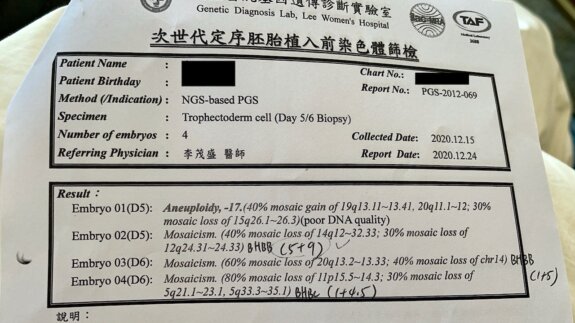
Interpret Result With Dr. Google
When I got home, I went down the Google rabbit hole and learned that PGS results are on a spectrum. Suppose over 80% of the cells biopsied were tested “abnormal.” In that case, the embryo is classified as an Aneuploid – they tend to have a much lower chance of implantation and a high probability of miscarriage. If less than 20% of the cells biopsied were “abnormal,” then the embryo is a Euploid. Everything in between is considered “mosaics.”
I then joined a Facebook Group titled “My Perfect Mosaic Embryo” and shared my results to help gain some insight. I learned that our three mosaic embryos were actually segmental, meaning the loss or gain of the chromosome was fractional and not a whole one. So the odds of them self-correcting are high. One girl left a comment that said, “I would not transfer all three unless you want triplets.” While I would trust my doctor over some random lady on Facebook, the comment made an impression.
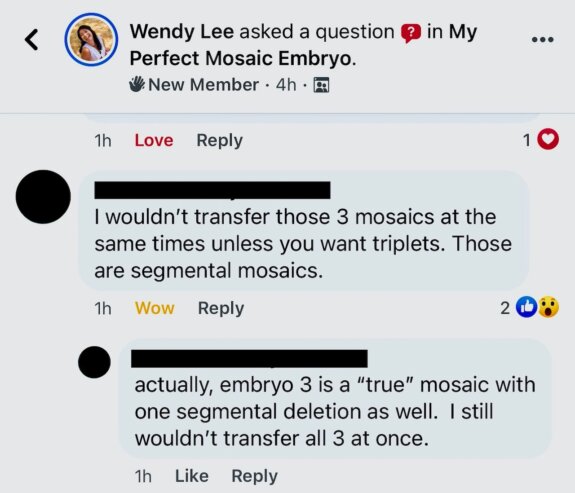
Note: I am grateful that Lee Women’s Hospital allows the transfer of mosaic embryos. My research showed that many clinics in the U.S. and elsewhere refuse to transfer any embryos that aren’t “normal” based on the PGS results. If that’s the case, I would not have PGS done on embryos unless you’ve had a history of chronic miscarriages.
Transfer Day
The day before the Big Day, I deployed all of the relaxation techniques under my belt – got a massage, took a bath, had a long meditation session, etc. Due to unfortunate visa ordeals, Xav was actually in France during this time. I was going solo – only science can allow a baby to be made without the husband around.
I arrived at the hospital and was led to a hotel-like room with classical music playing. True to Asian form, the rooms are named after top universities around the world. Mine, ironically, was the London Room, which reminds me of the LSE days.
The nurse came to prep me for the procedure. For once, someone actually told me what to expect. She also warned me that Dr. Lee, for some bizarre reason, likes to rush but told me to ignore him and just relax. He also requests patients to lay in that bed for three hours post-transfer – a practice totally unnecessary and old school.
Don’t Mind the Old School Practice
The procedure requires me to have a full bladder. The nurse told me I could get up and use the bathroom after 30 minutes instead of using that adult diaper that they will put on me (no joke). I appreciated her frankness so much. Only if she was at every one of my appointment.
After the nurse walked me through what to expect, a masseuse came in and gave me a 30-minute massage. This was a pleasant surprise, for once. I was relaxed and ready to go. At 11am, a team came wheeling in an ultrasound machine. I propped up my legs, the nurse scanned my bracelet with a chip, the embryos arrived, and the doctor popped them in. The procedure felt like a regular pap smear exam. The whole thing was incredibly anticlimactic and over in 5 minutes.
I then chilled in that room, enjoyed the classical music, texted some friends and family to share the news. Just like that, two months after the initial egg retrieval, three little embryos are swimming around inside of my uterus. The possibility of life begins.
The Final Wait
I was scheduled to go back to the hospital to test for pregnancy 10 days after the transfer. Since the embryos were already 5 or 6 days old, the usual two-week wait was shortened. A week after the transfer, I had a moment where a smell made me feel a tiny bit nauseous. I bought a test, just for the heck of it, and voilà, two lines. Not a faint line that you had to squint eyes to decipher. It was obvious. I then neurotically returned to the pharmacy and bought a handful more tests and tested every day – two years of stark blank tests, and then two dark lines, every time.
When I returned to the hospital, I was told to also pee in a cup for testing. The test looks similar to a regular one from the pharmacy. Again, two very clear lines. The doctor then prescribed a new round of progesterone shots and meds to help me stay pregnant. Blood was also drawn to test my beta HCG level.
Little did I know, these shots and blood tests would continue until week 10 of my pregnancy. These costs were also not included in the estimation that the hospital had initially given us… The meds that I was supposed to inject, take, and insert into myself were incredibly intense. It takes serious organization skills to keep on top of them.
And Then There Were… THREE?!
Just as I was adjusting to the positive pregnancy news, the next unknown is how many embryos latched. A week later, I returned to find out. We had transferred three embryos. But given that they weren’t genetically “normal” embryos, we didn’t think all three would implant.
Oh, but they did. For once, our statistic was above average. When the ultrasound technician nonchalantly announced that all three implanted, I was shocked. The doctor didn’t seem that bothered. He said we will monitor their development weekly and then see.
The transition from wanting a kid desperately to having… too many growing at once… was a lot to handle. I kept thinking about the comment from that random lady on Facebook Group… When I discussed with the consultant the following week about the risk of carrying triplets, she gave a straightforward answer: “normally, people in Taiwan opt for fetal reduction – it’s better to have two healthy babies than taking the risk for three.”
Errr…. I was simultaneously relieved to have an option but also stunned at the frankness of delivery. For once, though, I was glad they were frank. I was grateful to have a choice based on science and the health of both the mother and baby, rather than some moral hangup based on religion.
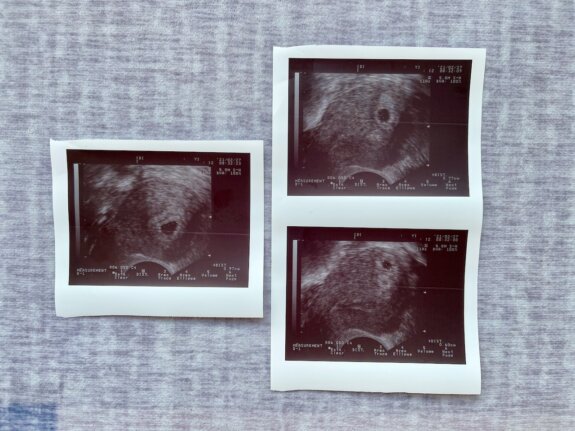
The First Trimester
During our 7-week scan, one of the babies measured only half of the other two, indicating a risk of not making it. And at 8-weeks, his heartbeat stopped. I was simultaneously sad and relieved that nature took its course, and I wouldn’t need to make a tough decision. While I’ve been an overachiever most of my life, I wanted that phase of my life to be over. Twins will be a handful as is.
Nausea, vomiting, and extreme fatigue set in with a vengeance around week 8, and I felt I slept through the next two months of my life. Meanwhile, we were returning weekly for scans and drugs. We were also instructed to do a series of screenings and tests. This included: Fragile X Syndrome Carrier Screening, Preeclampsia Risk Assessment, and Spinal Muscular Atrophy Carrier Screening, and CVS (Chorionic Villus Sampling).
Once again, no one provided any detailed explanation as to why we need these tests. The doctor merely said CVS is necessary because our embryos were mosaics. We were also told to undergo amino since one of the CVS results came back again with mosaicism. We then need to confirm with amino. No discussion, no options. Week after week, I’m simply being told what to do with a massive bill attached. The progesterone protocols also lasted through the first 10 weeks and amounted to multiple times more needles than the initial stimulation shots.
If we had to do a second round of IVF, I would absolutely switch doctors. Dr. Lee may be the famous hospital founder and has a stellar track record, but he is horrid at patient care. There is no care. Only processes and ticking off boxes. I put up with it thus far because at least he is effective… but the frustration is real.
Note: Based on my later research, if I were to switch doctors at Lee Women’s Hospital, I would switch to Dr. You (游姿寧), who seems to be much more patient and caring. Much can be said about a woman doctor who can be compassionate of the ordeal a woman must go through in this journey.
The advantage of this hospital is its top-notch technology. Having a famous doctor actually detracts from the experience since he has no time for you. Go with a doctor who cares. It’s a frustrating journey as is. Minimize the emotional pain when possible.

Timeline
Here’s the timeline of my IVF journey. Keep in mind that my cycle was very regular, so I didn’t need the initial first month to regulate that is typically recommended.
December 3rd, 2020 – First visit; the beginning of 7-day stimulation protocol.
December 4, 7, 8, 2020 – Returned for various tests, including mammogram, HSG, and follicle growth monitoring. Trigger shot was administered during the evening of the 8th.
December 10th, 2020 – Egg retrieval – 20 eggs were retrieved.
December 19th, 2020 – Visit to learn only 4 embryos made it to Day 5/6 for PGS testing.
January 25th, 2021 – 3rd day of my cycle to begin prepping for transfer. Put on a strict schedule of meds for the next two weeks.
February 3rd, 2021 – Returned to check on endometrium lining thickness for transfer.
February 10th, 2021 – Transfer Day
February 20th, 2021 – Positive pregnancy test! Officially 4 weeks pregnant!
We were super fortunate to become pregnant in just one IVF cycle. In the grand scheme of things, this journey was fairly quick. But all of the frustrating experiences during these three months made it felt much longer.
Major Cost Break Down
Cost Through Transfer Day
From the beginning of our treatment up through transfer day, our total cost was NT$ 278,494 (~US$ 9,883). Some of the major costs are as follows:
- HSG and 4D Uterine Ultrasound – NT$ 5,500 (~US$ 200)
- Semen analysis and HBA – NT$ 5500 (~US$ 200)
- First week of stimulation drugs – NT$ 31,000 (~US$ 1,100)
- Egg Retrieval fee – NT$ 22,000 (~US $790)
- Embryo monitor and AI grading – NT$ 10,000 (~US$ 360)
- Embryo freezing fee – NT$ 15,000 (US$ 540)
- PGS – NT$ 18k per embryo, and we had four – NT$ 72,000 (~US$ 2585)
- Embryo defrost fee – NT$ 10,000 (~US$ 360)
- Embryo transfer fee – NT$ 40,000 (~US$ 1,436)
The rest of the fees are of various blood tests, drugs, etc. that I don’t have a detailed breakdown of. When you inquire the hospital, they say an average round of treatment costs approximately NT$ 120k-150k (US$ $4,300 – $5,400). This rate really only applies if you are doing a very straightforward fresh transfer. As you can see, given our frozen transfer, even removing the PGS fees, the costs are well above their quote. Being Taiwanese and under the care of NHI really didn’t help at all. Fertility treatment is not subsidized, so this pricing would be similar for both international or domestic clients.
Cost Post Transfer Day Through First Trimester
Post transfer, what we’ve spent on drugs and screening through the first trimester totaled NT$ 101,170 (~US$ 3,590). Most of this cost is the drugs that cost around US$ 250 a week, times 10 weeks is US$2,500. The CVS costs NT$ 21,000 (~$755) per child, and we have two.
Once again, the hospital only accepts cash, and there is little warning on how much each visit’s payment would be. So it’s best to have the entire sum saved into account ready for withdrawal. It’s unfair for anyone who may need a payment plan. Though I don’t think Lee Women’s Hospital cares about equal access to fertility treatment and care.
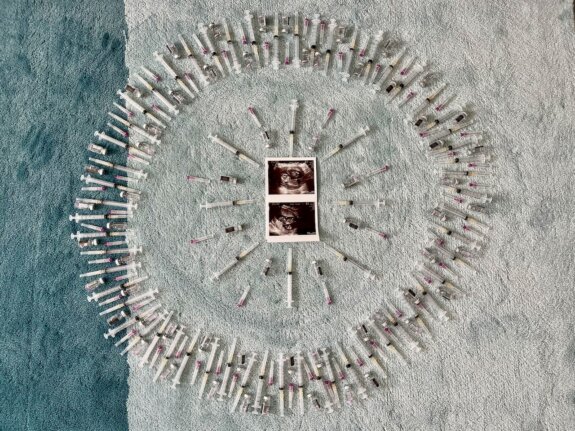
Final Thoughts
Reach Out to Others
The IVF journey is both incredibly personal and lonely. Towards the end of my cycle, I began sharing the journey on my Instagram Story. I was surprised by the number of friends and acquaintances who reached out to send well-wishes and said they had experienced the same ordeal. Their messages made me feel less alone. Don’t be afraid to reach out to your community to find people who can resonate with this very arduous process.
A friend had recommended the book, Infreakingfertility, which discusses more of the emotional aspect of dealing with infertility. Recommended reading for your family and friends to know what you are experiencing.
Do Some Homework
My one piece of advice to first-time IVFers is to do a bit of homework and understand the end-to-end process. Don’t depend on your doctor to disseminate information and guide you every step of the way. I resisted doing too much research, afraid to go down the Internet rabbit hole. But in the end, not knowing and Googling after every appointment was infinitely more frustrating. It’s a fine line between research and the Google rabbit hole. Hold your line.
Switch Doctors or Hospital for Support
I’m immensely grateful that we found success in just one round, albeit all of the frustration. We were, however, ready to switch doctors if we had needed second or more rounds. Not all doctors or IVF clinics are created equal. Sometimes you don’t know it’s a bad fit until you are in the thick of the process, but there is no point in repeating a frustrating or failed round.
Despite our frustrating journey, I still recommend Lee Women’s Hospital in Taiwan, especially if you’ve had failed rounds elsewhere in Taiwan or Asia. At the end of the day, finally being pregnant with healthy babies is the end goal. The technology here really is top-notch. But to minimize frustration, set the right expectation before coming here.
Be Kind to Yourself
The one major takeaway from our IVF journey is just how unfair the medical system is against women. For couples battling male-factor infertility, the man often still doesn’t need to do anything other than jerk off into a cup a few times for samples. That’s it.
The injections from day one wreak havoc on a woman’s natural system. I hadn’t felt myself since December 3rd, 2020, when this whole journey commenced. I don’t know that I ever will feel myself again or simply need to adjust to the new normal post-birth. Hormones from IVF and then pregnancy do all sorts of strange things to both our bodies and emotions.
I’m learning to be kind to myself and let my body do its miraculous work through this transition. Bringing life into this world is a miracle. Sometimes, it feels like a costly self-inflicted pain. But it’s a journey that we’ve chosen. For that, we accept all of the joy and challenges. I wish you the best in your personal journey to parenthood. Know that you are not alone.
Helpful Reads
- How much does IVF in Taiwan Cost? | To Travel Much
- IVF at Lee Women’s Hospital, Taichung, Taiwan | To Travel Much
- Our IVF Journey at KKH | Our 15 Hour Work Week

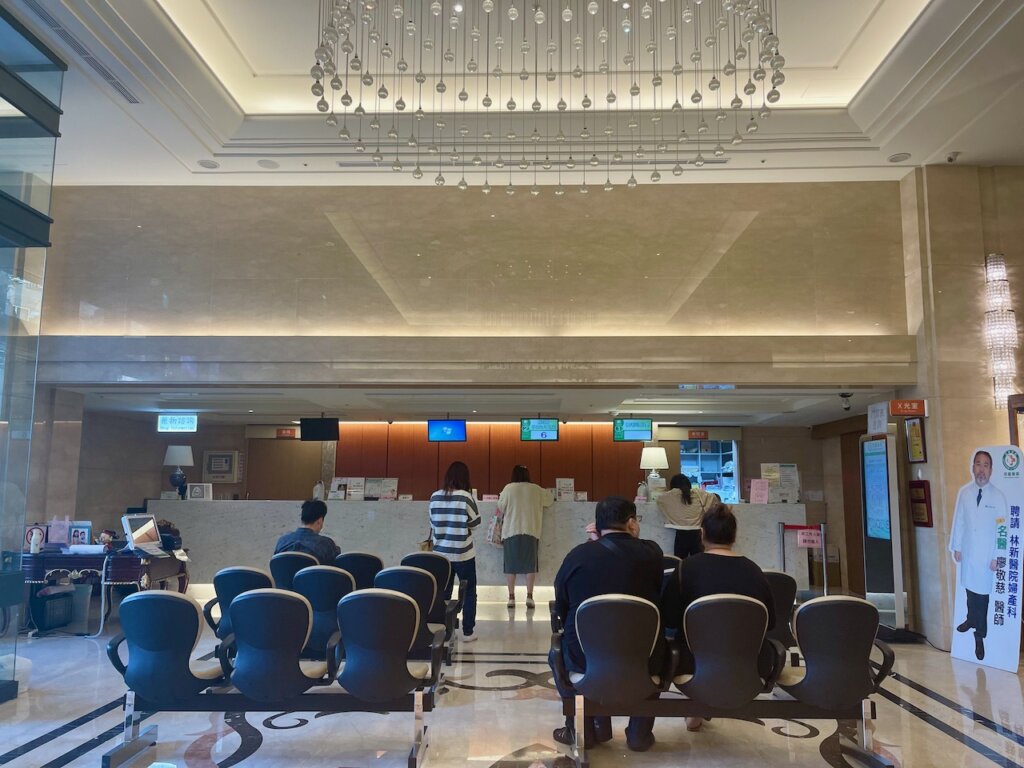
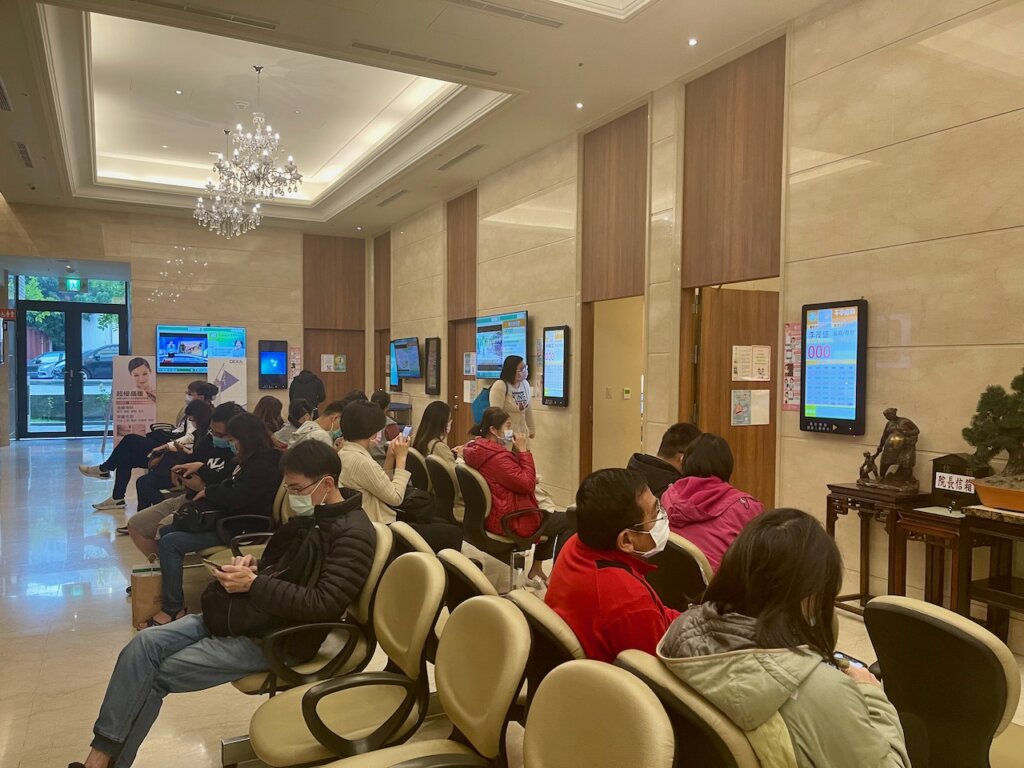
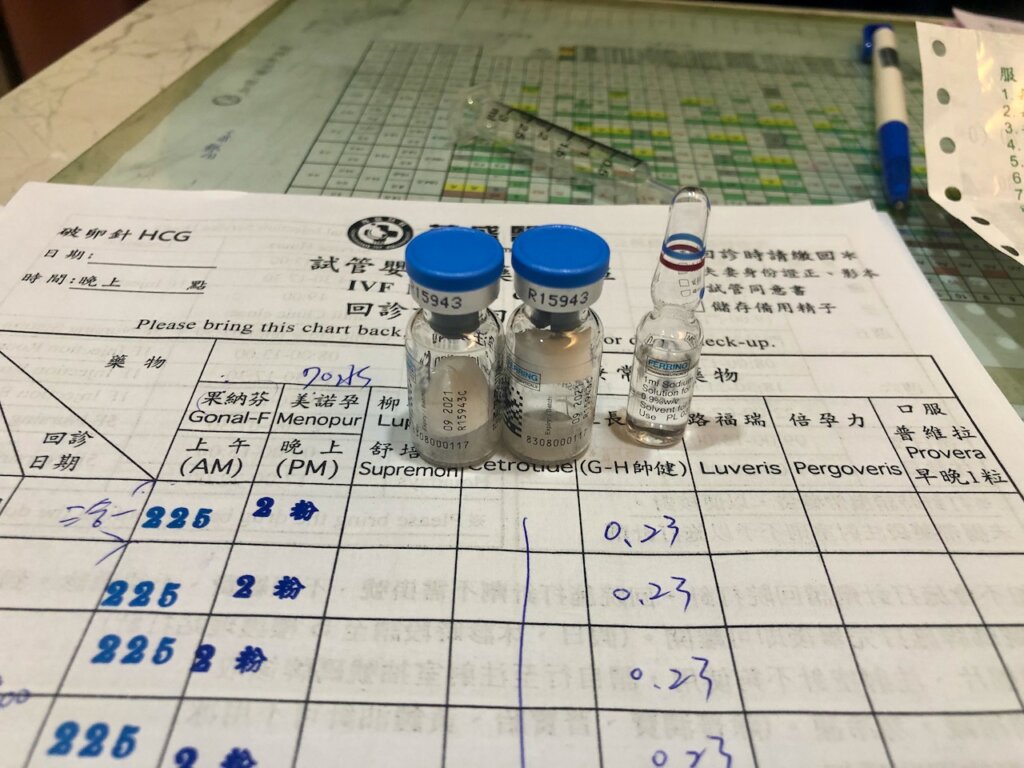
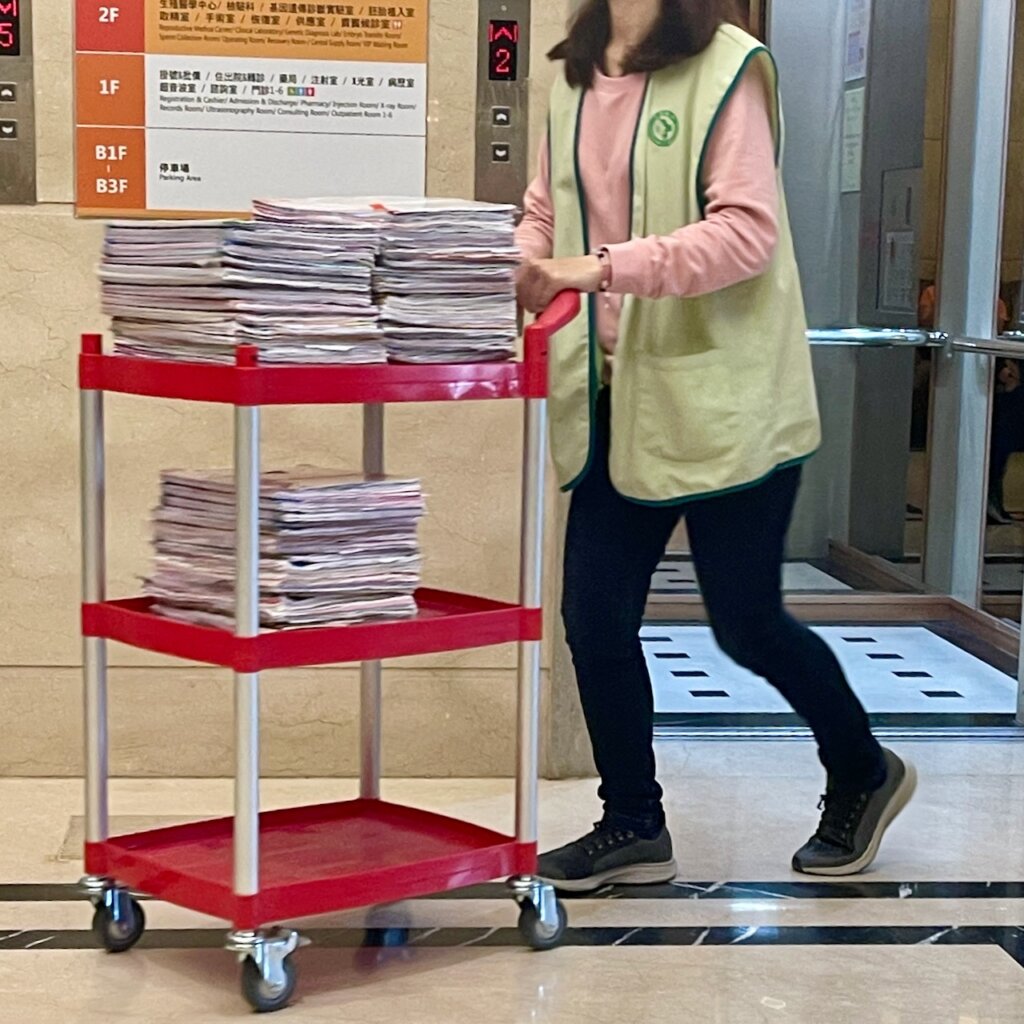
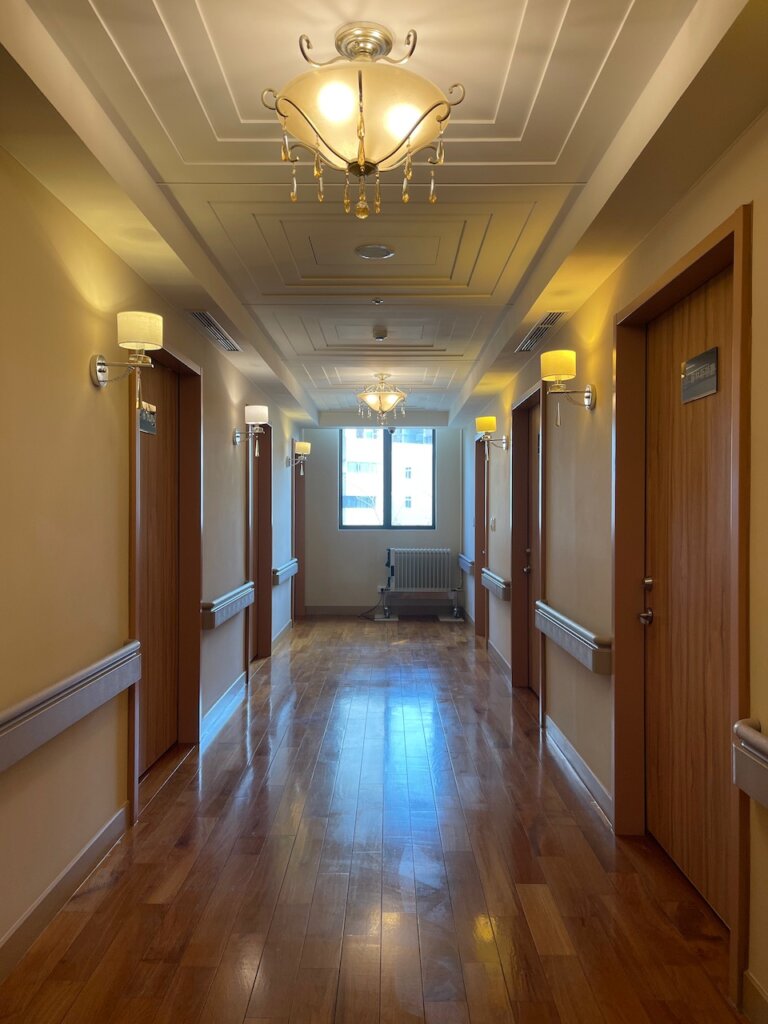
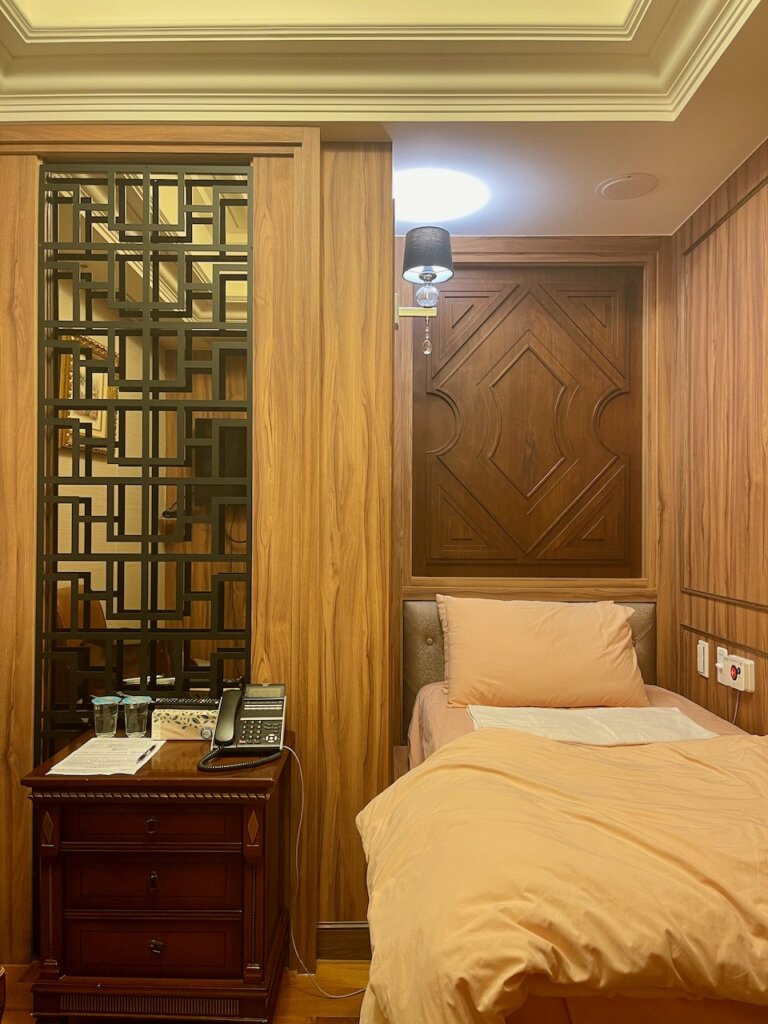
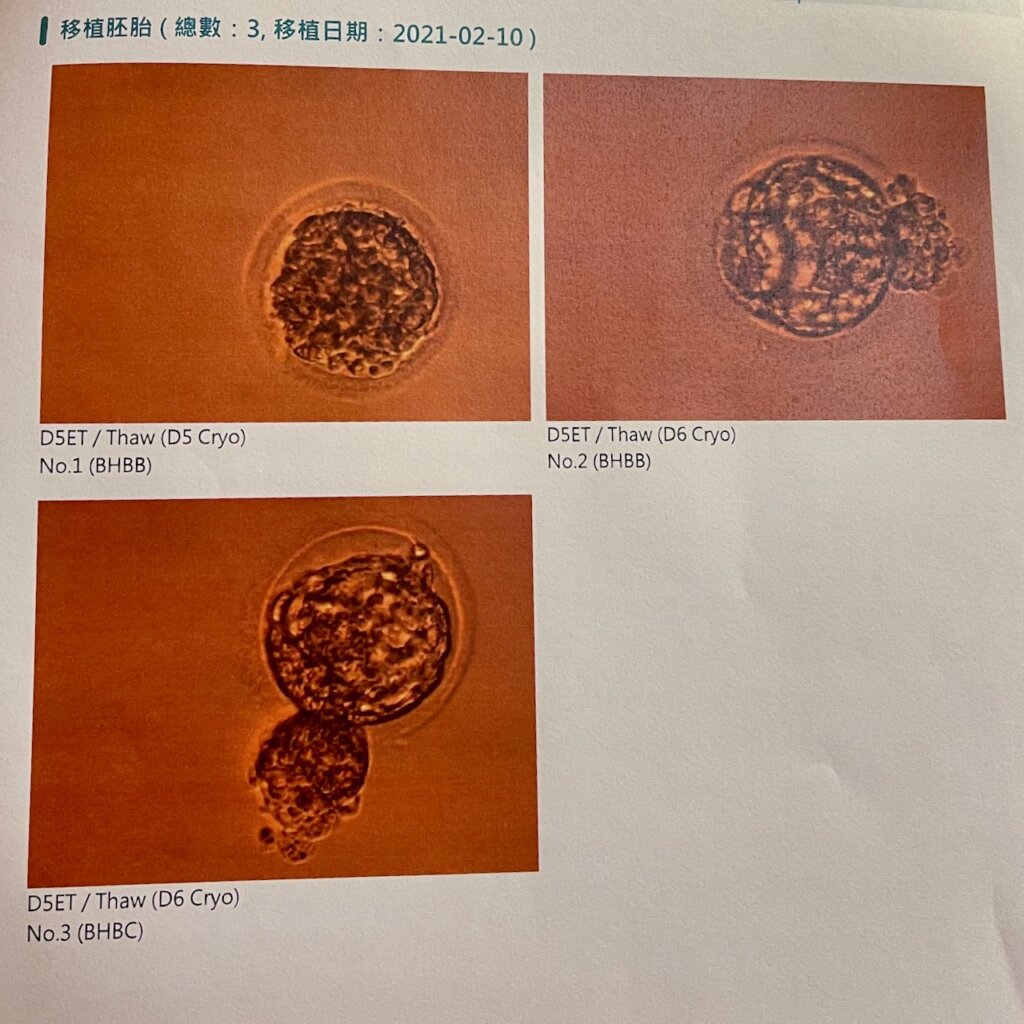
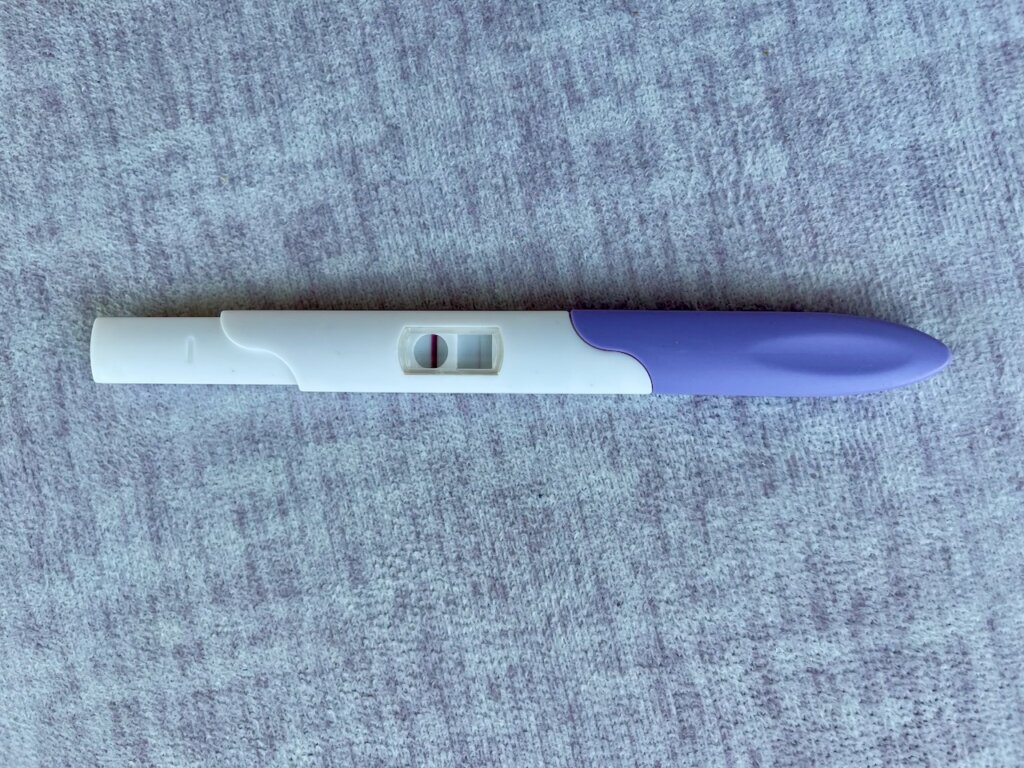

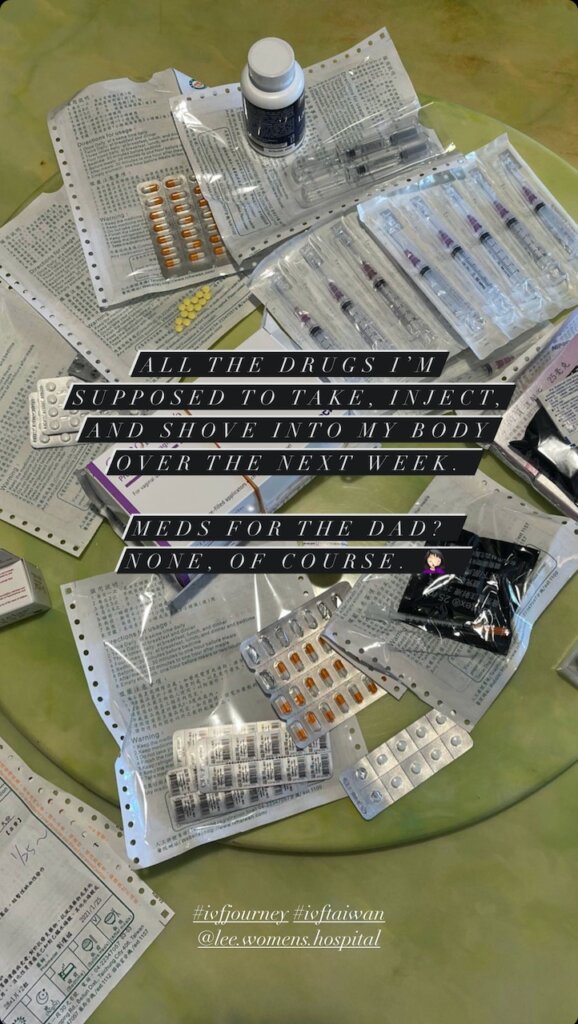
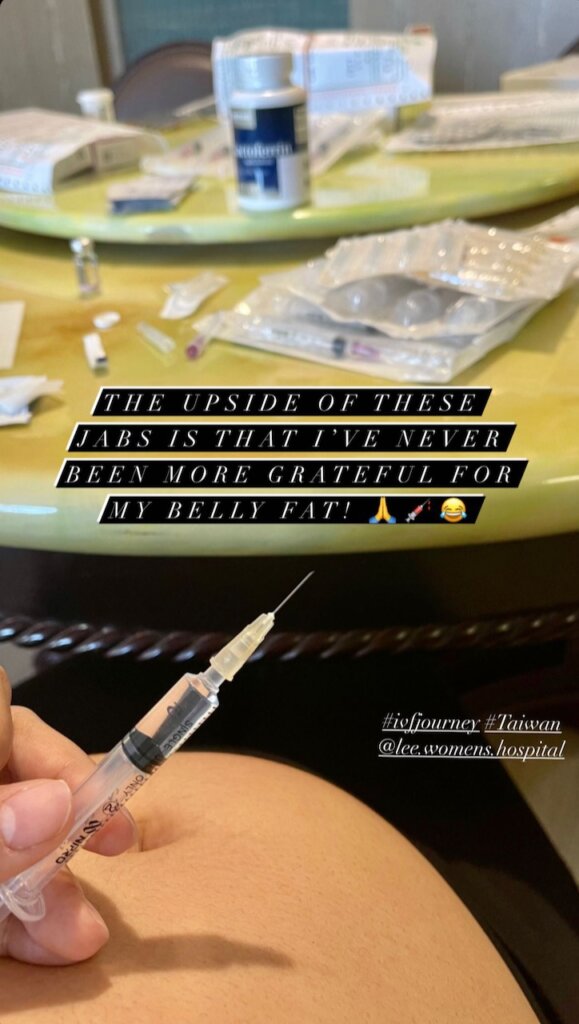
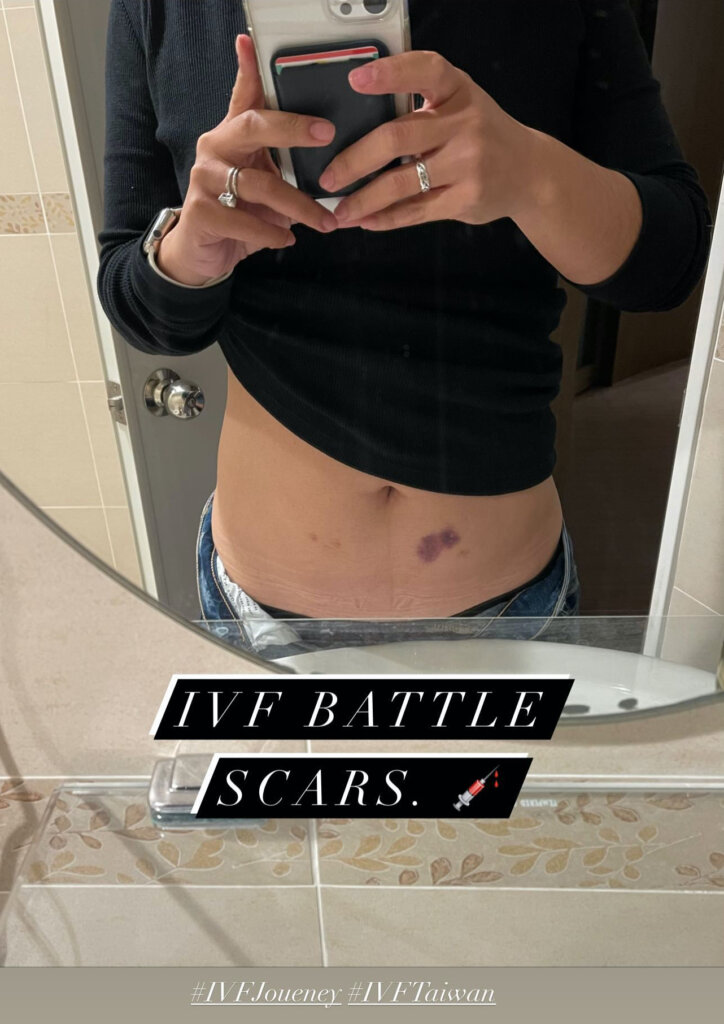





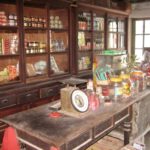
Thank you for sharing your journey. I went through ivf in the USA and am in the medical field and I still felt wholly uninformed and did most of my own education. It does feel a bit like an assembly Line. Prayers for a healthy pregnancy and healthy birth process for you and your babies
What an honest account. Thank you for sharing with such honesty and practicality.
Wishing you all the best with the twins. Can’t wait to see them ❤️!
Thanks for your honesty and congratulations!!! Pregnancy is difficult no matter what the situation and so much of it is a lonely experience. I hoping the months until October are happy and healthy.
Such a journey.
Even with a natural pregnancy Taiwanese doctors push so many unnecessary tests. I learned the hard way with my daughter but I am currently pregnant with my second child and have refused the amnio and endless screenings. I have found two doctors who are caring and take their time which is hard to come by here. Also their standard birthing procedures are so outdated. Not many hospitals will allow skin to skin for longer than 10 minutes before the baby is taken to the nursery for observation. This blows my mind.
Wishing you healthy happy journey